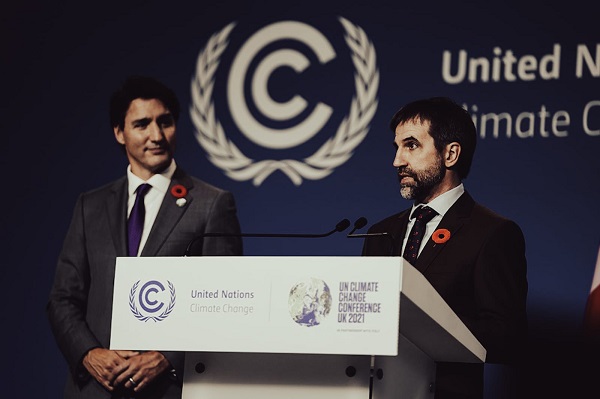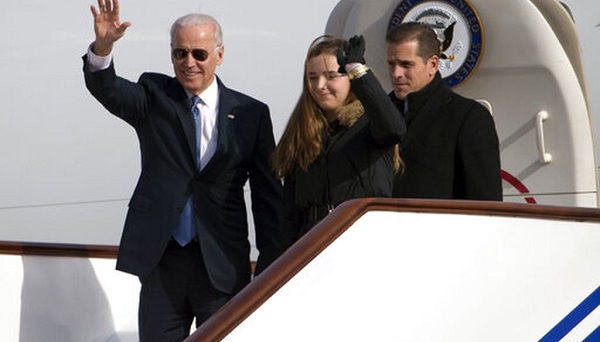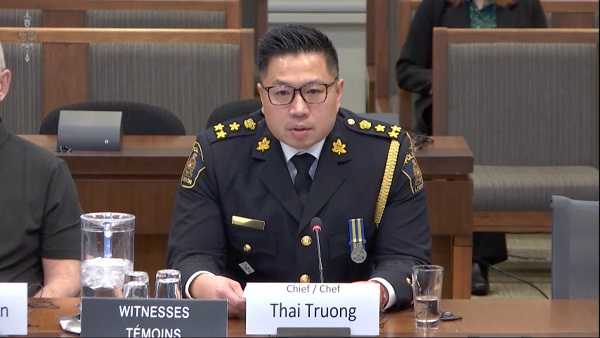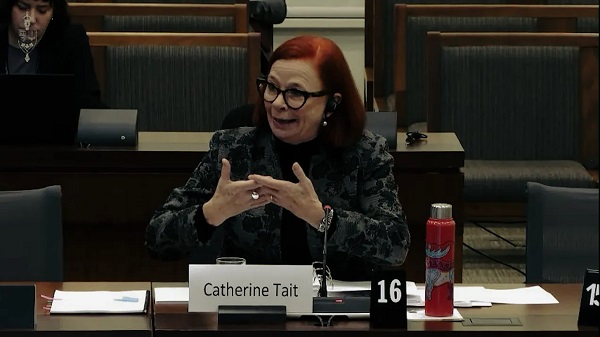Opinion
Budget 2019 – Poor wording requires 2 ex-spouses within 5 years for Home Buyers Plan

This is one of those rare times I hope I am wrong in my interpretation, and look forward to being proven wrong by my professional colleagues.
On March 19, 2019 the federal government tabled its election-year budget. One of the newest and strangest provisions is the ability for people going through a separation or divorce to potentially have access to their RRSP under the Home Buyers Plan.
Now in my article and podcast entitled: “Escape Room – The NEW Small Business Tax Game – Family Edition” with respect to the Tax On Split Income (TOSI) rules, I made a tongue in cheek argument that people will be better off if they split, because then the TOSI rules won’t apply.
In keeping with the divorce theme, beginning in the year of hindsight, 2020, the federal government is giving you an incentive to split up and get your own place.
However, there are a few hoops:
On page 402 of the budget, under new paragraph 146.01(2.1)(a), at the time of your RRSP withdrawal under the Home Buyers Plan, you must make sure that:
- – the home you are buying is not the current home you are living in and you are disposing of the interest in the current home within two years; or
- – you are buying out your former spouse in your current home; and
you need to:
- be living separate and apart from your spouse or common-law partner;
- have been living separate and apart for a period of at least 90 days (markdown October 3, 2019 on the calendar),
- began living separate and apart from your spouse or common-law partner, this year, or any time in the previous 4 years (ok, you don’t have to wait for October); and…
…here is where the tabled proposed legislation gets messy.
Proposed subparagraph 146.01(2.1)(a)(ii) refers to where the individual
- wouldn’t be entitled to the home buyers plan because of living with a previous spouse in the past 4 years that isn’t the current spouse they are separating from
“(ii) in the absence of this subsection, the individual would not have a regular eligible amount because of the application of paragraph (f) of that definition in respect of a spouse or common-law partner other than the spouse referred to in clauses (i)(A) to (C), and…”
The problem with the wording of this provision, is that it is written in the affirmative by the legislators using the word “and”. This means, you must be able to answer “true” to all the tests for the entire paragraph to apply.
The way I read this, the only way to answer “true” to this subparagraph is if you have a second spouse (ie: spouse other than the spouse referred to) that you shared a home with and you split from in the past four years.
If you have a second spouse that you shared a home with in the past four years, then “paragraph (f)” in the definition of “regular eligible amount” would apply and the answer would be “true”.
If the answer is “true” you can then get access to your RRSP Home Buyers Plan.
If you don’t have a second spouse then, even though “paragraph (f)” might be met, the phrase “spouse other than the spouse referred to” would not be met, and therefore the answer would be “false”.
This would, in turn, cause the entire logic test of the provision to be “false” and so you would not be able to take out a “regular eligible amount” from your RRSP for the Home Buyers plan because you do not meet the provisions.
If my interpretation is correct then I would really be curious as to what part of the economy they are trying to stimulate.
In my opinion the legislation could be fixed with a simple edit:
“(ii) in the absence of this subsection, the individual would not have a regular eligible amount because of the application of paragraph (f) of that definition in respect of:
(A) a spouse or common-law partner; or
(B) a spouse or common-law partner other than the spouse referred to in clauses (i)(A) to (C); and…”
—
Cory G. Litzenberger, CPA, CMA, CFP, C.Mgr is the President & Founder of CGL Strategic Business & Tax Advisors; you can find out more about Cory’s biography at http://www.CGLtax.ca/Litzenberger-Cory.html
Censorship Industrial Complex
UNESCO’s New Mission: Train Influencers About Combatting Online “Misinformation”

The UN Educational, Scientific and Cultural Organization (UNESCO) is now incorporating teaching influencers how to “fact check” into its activities.
UNESCO claims that influencers have become “primary sources of news and cultural information” around the world – which prompted it to carry out a survey into how these online personalities verify the “news” they present.
Citizens in UN member-countries may or may not be happy that this is how their taxpayer money funding the world organization is being spent these days. But UNESCO is not only conducting surveys; it is also developing a training course for said influencers (which are also interchangeably referred to as content creators in press releases).
It’s meant to teach them not only to “report misinformation, disinformation and hate speech” but also to collaborate with legacy media and these outlets’ journalists, in order to “amplify fact-based information.”
The survey, “Behind the screens,” was done together with researchers from the US Bowling Green State University. 500 influencers from 45 countries took part, and the key findings, UNESCO said, are that 63 percent of them “lack rigorous and systematic fact-checking protocols” – but also, that 73% said they “want to be trained.”
This UN agency also frames the results as showing that respondents are “struggling” with disinformation and hate speech and are “calling for more training.”
UNESCO is justifying its effort to teach influencers to “rigorously” check facts by referring to its media and information literacy mandate. The report laments that mainstream media has become “only the third most common source (36.9%) for content creators, after their own experience and their own research and interviews.”
It would seem content creators/influencers are driven by common sense, but UNESCO wants them to forge closer ties with journalists (specifically those from legacy, i.e., traditional media – UNESCO appears very eager to stress that multiple times.)
Related: United Nations Development Program Urges Governments to Push Digital ID
Under the guise of concern, the agency also essentially warns creators/influencers that they should be better aware of regulations and “international standards” that pertain to digital media – in order to avoid “legal uncertainty” that exposes them to “prosecution and conviction in some countries.”
And now, UNESCO and US-based Knight Center for Journalism in the Americas have launched a one-month course which is currently involving 9,000 people from 160 countries. The goal is to train them to “address disinformation and hate speech and provide them with a solid grounding in global human rights standards.”
The initiative looks like an attempt to get “traditional” journalists to influence the influencers, and try to prop up their outlets, that are experiencing an erosion in trust among their audiences.
If you’re tired of censorship and surveillance, subscribe to Reclaim The Net.
Censorship Industrial Complex
New FCC Chairman Vows to End Big Tech’s Grip on Free Speech

|
The newly appointed FCC Chairman Brendan Carr has made it clear that dismantling the “censorship cartel” is his primary goal. His plan to address what he perceives as rampant censorship on social media platforms and beyond was detailed during a recent interview on “Sunday Morning Futures.”
“Combating tech censorship is going to be one of the top priorities for me. We need to restore Americans’ right to free speech,” Carr emphasized. He discussed the role of major tech companies like Facebook in this alleged cartel, accusing them of collaborating with advertisers and government officials to curtail the free speech rights of the public. “You mentioned Facebook and other companies. They’ve been part of a censorship cartel that have worked with advertisers. They’ve worked with government officials to censor the free speech rights of everyday Americans, and that’s got to end because censorship isn’t just about stopping work. It’s about stopping ideas.” Watch the video clip here. Carr continued, highlighting the stifling effect of censorship on innovation and prosperity. “America is a country of founders, of people that have pushed boundaries, pushed frontiers. They’ve innovated and, when you silence speech, you silence ideas, and we unleash America’s prosperity again. That’s why you feel this vibe shifting in the country where people know President Trump is about to lead another great American comeback, because this wet blanket of government control is going away, and our economy is going to flourish again.” The appointment of Carr comes at a time when many have accused Big Tech firms of bias and suppression of certain voices. This was evident when Twitter notoriously suppressed a story about Hunter Biden’s laptop just before Elon Musk took over the company, and other platforms, including Facebook, faced backlash for limiting information labeled as misinformation during the COVID-19 pandemic. Meta CEO Mark Zuckerberg has recently expressed regrets over yielding to the Biden-Harris administration’s demands to censor specific content. If you’re tired of censorship and surveillance, subscribe to Reclaim The Net.
|
-

 David Clinton2 days ago
David Clinton2 days agoWhat Happens When Ministries Go Rogue?
-

 Crime2 days ago
Crime2 days agoWhat did Canada Ever Do to Draw Trump Tariff on Immigration, You Ask? Plenty
-

 Automotive2 days ago
Automotive2 days agoNorthvolt bankruptcy ominous sign for politicians’ EV gamble
-

 Daily Caller2 days ago
Daily Caller2 days agoCNN’s Scott Jennings Says History Will Remember Biden As ‘Complete And Total Disgrace’ Over Hunter Pardoning
-

 Addictions2 days ago
Addictions2 days agoLondon Police Chief warns parliament about “safer supply” diversion
-

 Automotive2 days ago
Automotive2 days agoElectric-vehicle sales show modest spark
-

 Health2 days ago
Health2 days agoFauci admitted to RFK Jr. that none of 72 mandatory vaccines for children has ever been safety tested
-

 Daily Caller2 days ago
Daily Caller2 days ago‘Dark Day’: Another Western Country Backs Doctor-Assisted Suicide, Opens Door To ‘Murder Of Old And Sick’







